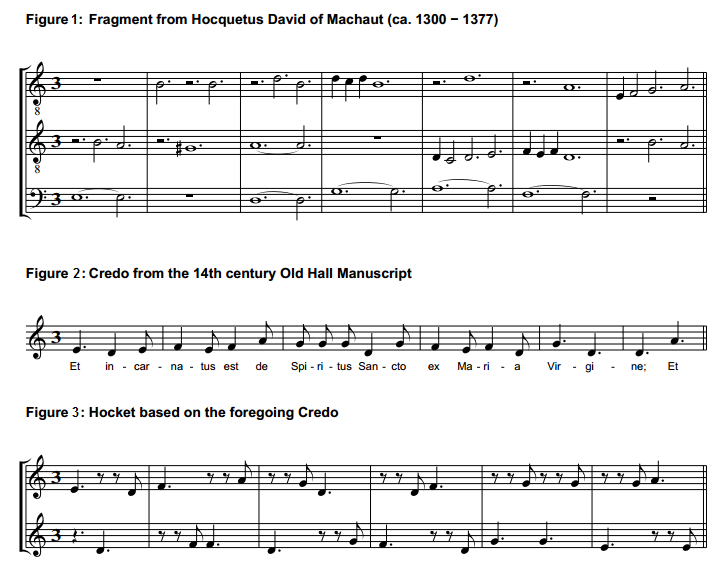| Hocket In European music, hocket was used primarily in vocal music of the 13th and early 14th centuries. It was a predominant characteristic of music of the Notre Dame school, during the ars antiqua, in which it was found in sacred vocal music. In the 14th century, the device was most often found in secular vocal music. The term ’hocket’ comes from the French word ’hoquet’ (in Old French also ’hocquet’) meaning a shock, sudden interruption, hitch, hiccup. In the 13th and 14th century composers and music theorists define the hocket as the breaking of a melody into single notes or very short phrases by means of rests (see below the Machaut example). In some cases of medieval practice of hocket, a single melody is shared between two (or occasionally more) voices such that alternately one voice sounds while the other rests. (see below example Credo and hocket from the 14th century Old Hall Manuscript 
|